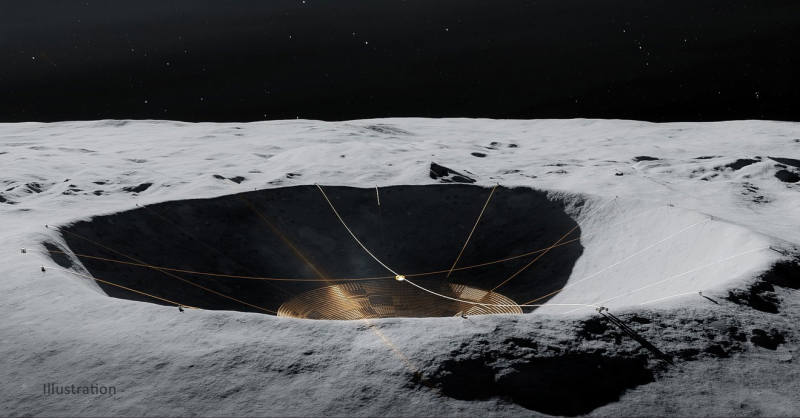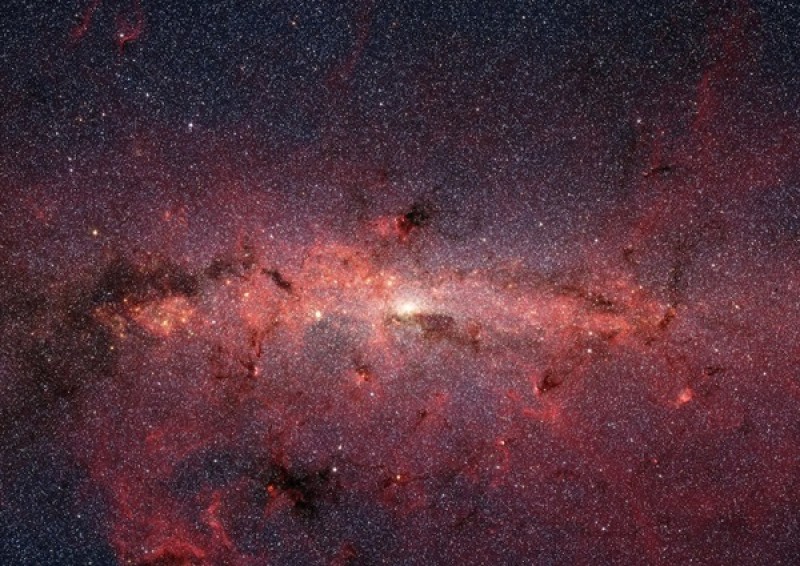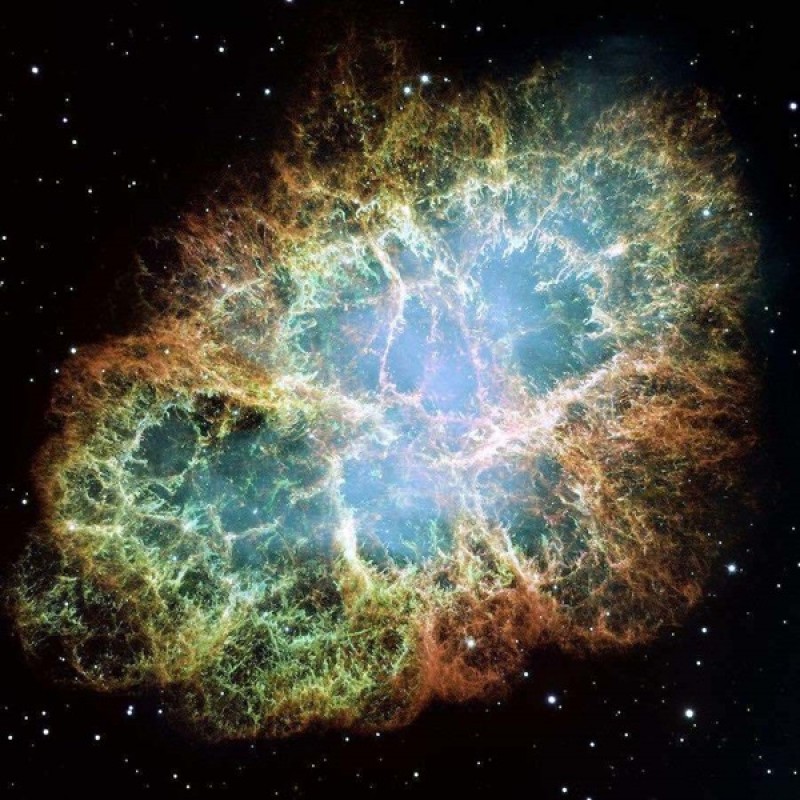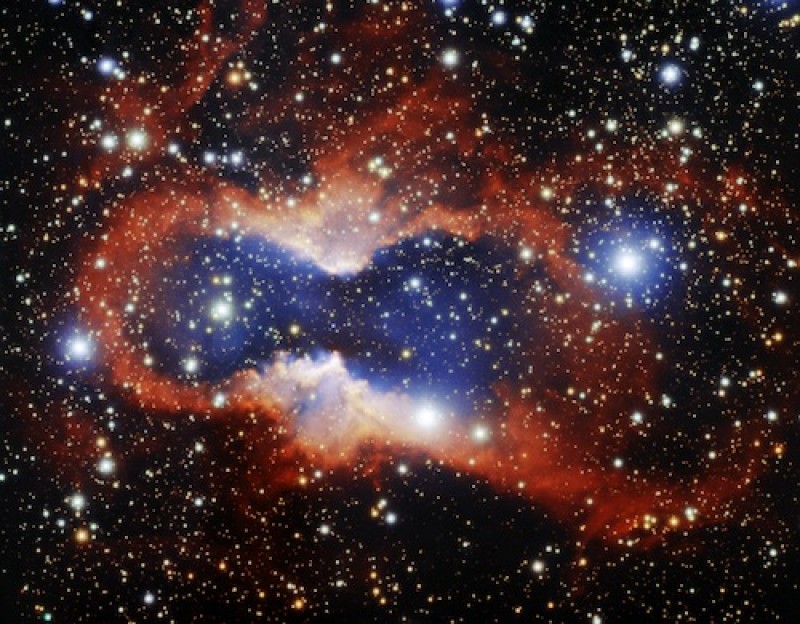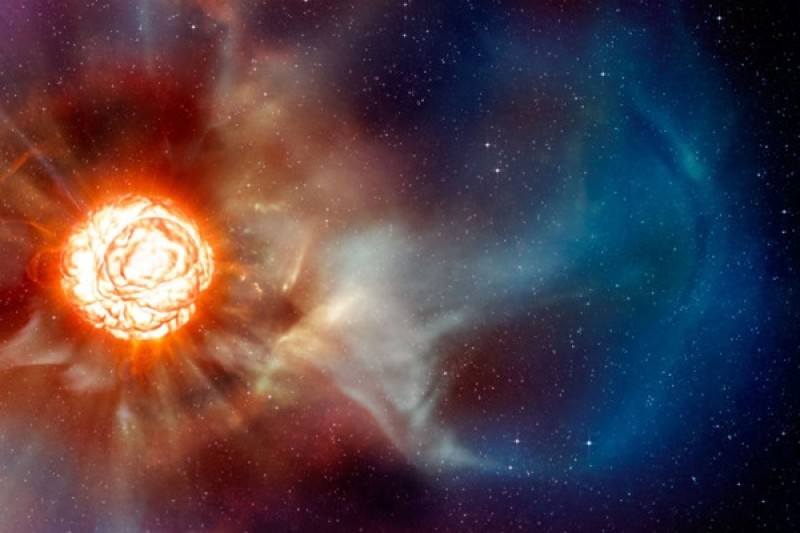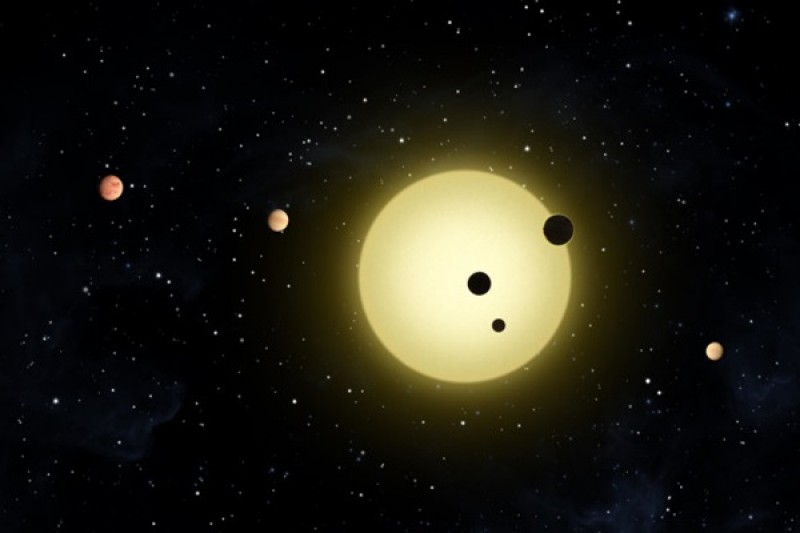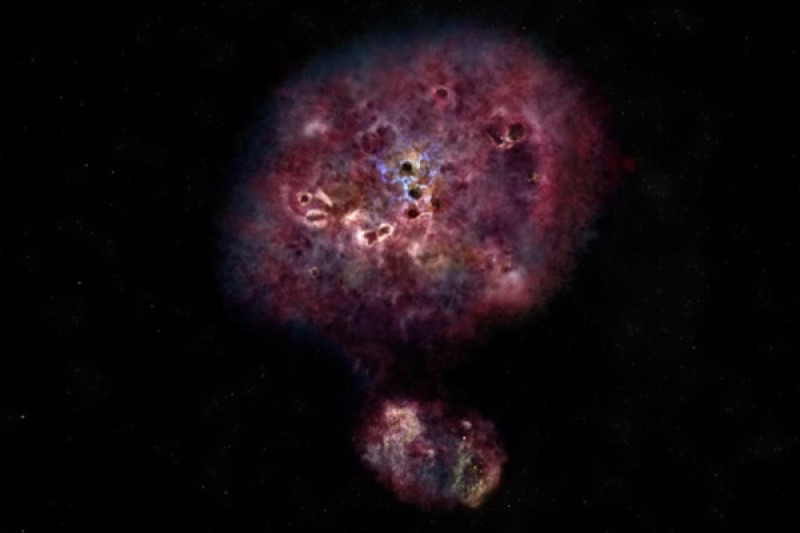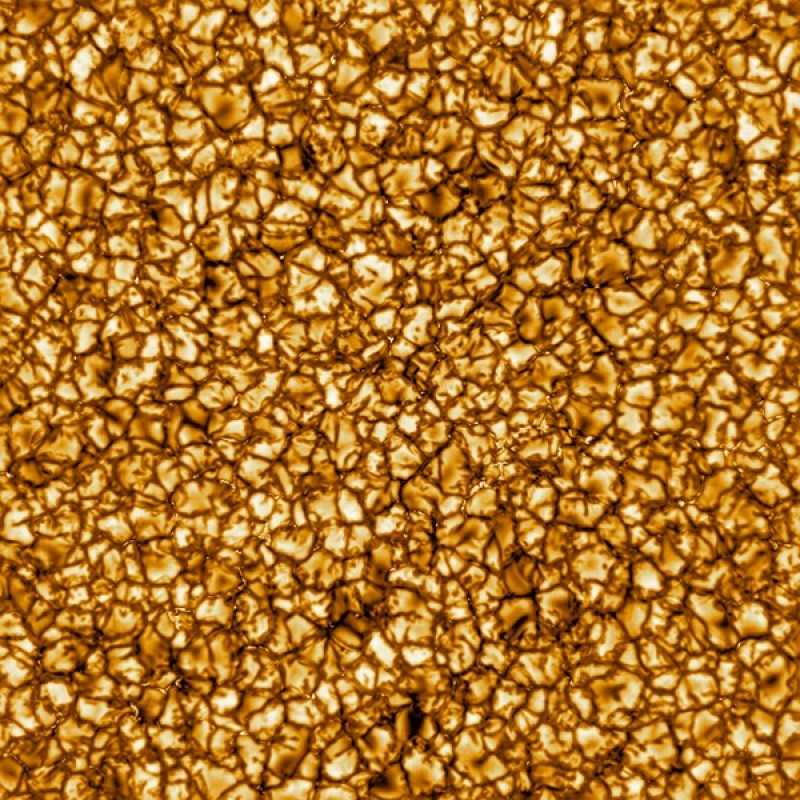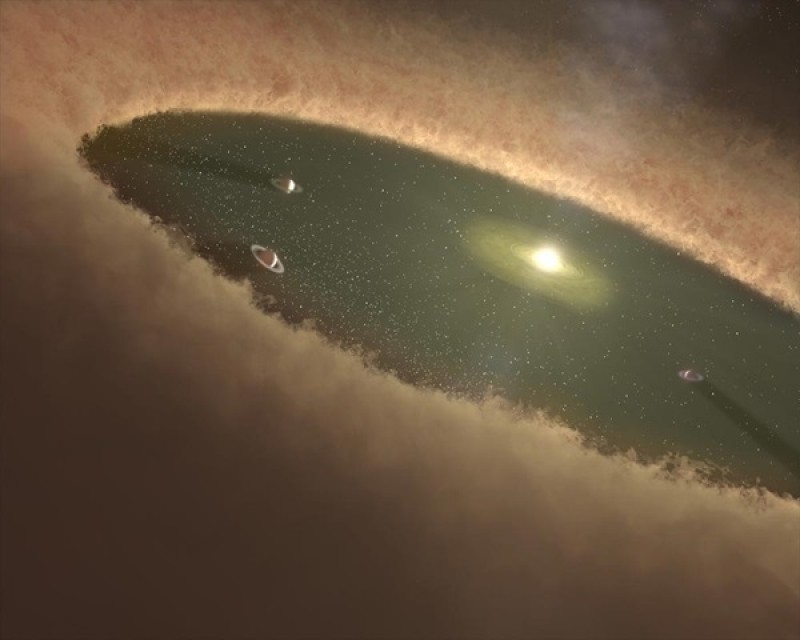Blog
Lunar Crater Radio Telescope: Illuminating the Cosmic Dark Ages
Wednesday, May 5th 2021 08:42 PM
The Moon’s surface is covered in craters, and one of the natural like depressions could provide a support structure for a radio telescope dish. As shown in this illustration, DuAxel rovers could anchor the wire mesh from the crater’s rim.
Credit: Vladimir Vustyansky
After years of development, the Lunar Crater Radio Telescope (LCRT) project has been awarded $500,000 to support additional work as it enters Phase II of NASA’s Innovative Advanced Concepts (NIAC) program. While not yet a NASA mission, the LCRT describes a mission concept that could transform humanity’s view of the cosmos.
The LCRT’s primary objective would be to measure the long-wavelength radio waves generated by the cosmic Dark Ages – a period that lasted for a few hundred million years after the Big Bang, but before the first stars blinked into existence. Cosmologists know little about this pe...
Read More
Read More
Our new view of the Milky Way
Thursday, October 15th 2020 11:31 PM
A lot can change in a year. First came the photo of an orange-and-black ring swirling in a distant galaxy. It splashed across newspapers worldwide last year, announcing the first-ever image of a black hole. Then, early this year, scientists released a data-based picture of our solar system floating at the edge of a towering wave of dazzling molecular clouds and stellar nurseries. The results smashed a venerable model of our spiral galactic arm.Stellar nurseries reveal how stars are born, while black holes represent their final annihilation. Based on these two extraordinary pictures, astronomers are now scrambling to refine theories about both. And, in the process, they are ushering in a new way of seeing our Milky Way galaxy.
The Milky Way’s center is home to more than 100,000 supernovae, hinting that the region must have undergone an intense period of star formation in its past. Today, this area is still packed with stars that formed early...
Read More
Read More
Why astronomy is considered the oldest science
Thursday, October 8th 2020 08:35 PM
Millions of years ago, ancient humans living on the African savanna likely gazed up in wonderment at the bright Moon and star-filled sky. This cosmic backdrop wasn't too different from the one we see today; but how they interacted with it almost assuredly was. It wasn’t until humans came to view the stars as tools that we became masters at understanding their movements.
By some 7,000 years ago, a group of nomadic people living on the African savanna became the first-known humans to record the motions of the stars at a site called Nabta Playa. This cattle-worshiping cult of hunters and gatherers built the world’s oldest stone circle to track the arrival of the summer solstice, as well as the seasonal monsoons they depended on for water and food.
"This was the dawn of observational astronomy," J. McKim Malville, a professor emeritus at the University of Colorado and archaeoastronomy expert, told Astronomy earlier this year.
...
Read More
Read More
High-energy cosmic rays: Solving a century-old mystery
Thursday, October 1st 2020 10:07 PM
“The Earth is being constantly bombarded from space by cosmic rays of an unknown origin!”
This may seem like the cry of a panicking news reporter in a lurid sci-fi tale, but it’s actually a scientific fact — albeit a slightly hyperbolic one.
Mysterious cosmic rays traveling at speeds approaching that of light constantly pelt Earth’s upper atmosphere from the depths of space, creating high-energy collisions that dwarf those produced in even the most powerful particle colliders. The atmospheric crashes rain down gigantic showers of secondary particles to the surface of our planet.
But despite being discovered more than a century ago, physicists still don’t know where cosmic rays come from.
“The short answer to why we can’t trace cosmic rays back to their source: magnetic fields,” Julia Tjus, professor at the School of Physics and Astronomy at Ruhr University in Bochum, Germa...
Read More
Read More
Astronomers target the celestial hourglass of a dying star
Friday, March 6th 2020 06:16 PM
Beauty can come after death — well, at least after the death of a star.
The image captured above, taken by the Gemini Observatory, showcases the planetary nebula known as CVMP 1, which is the outcome of a main-sequence star that blew off its outer layers as it ballooned into a red giant. This cosmic wonder doesn't have a long lifespan, though. Its hourglass shape will only last about 10,000 years. And one day, the star will cool down, causing its hourglass form to fade from view.
CVMP 1 is located about 6,500 light years away in the constellation of Circinus. This planetary nebula is formed mostly of enriched helium and nitrogen and is one of the largest planetary nebulae known to astronomers.
Despite their name, planetary nebulae aren’t formed from planets. Instead, their name comes from the round, planet-like appearance some stars had when viewed through early telescopes. Planetary nebulae also take on a wide variety of...
Read More
Read More
When Betelgeuse goes supernova, what will it look like from Earth?
Wednesday, February 19th 2020 08:41 PM
A plume of gas nearly the size of our solar system erupts from Betelgeuse's surface in this artist's illustration of real observations gathered by astronomers using the Very Large Telescope in Chile.
If you stargaze on a clear winter night, it’s hard to miss the constellation Orion the Hunter, with his shield in one arm and the other arm stretched high to the heavens. A bright red dot called Betelgeuse marks Orion’s shoulder, and this star's strange dimming has captivated skygazers for thousands of years. Aboriginal Australians may have even worked it into their oral histories.
Today, astronomers know that Betelgeuse varies in brightness because it’s a dying, red supergiant star with a diameter some 700 times larger than our Sun. Someday, the star will explode as a supernova and give humanity a celestial show before disappearing from our night sky forever.
That eventual explosion explains why astronomers got excited when Betelgeuse start...
Read More
Read More
How many planets are there in the universe?
Thursday, February 13th 2020 06:04 PM
Astronomers estimate that there is roughly one exoplanet per star in our galaxy. Of course, some stars have many planets – our own Sun has eight. And some stars have none. But if a star lives long enough, forming planets seems to be the rule, rather than the exception.That doesn’t mean astronomers can map all of those billions of stars though. When it comes to exoplanets that have been measured or counted in some way, the numbers are much smaller.The running counter of known exoplanets – as of this writing – stands at 4,108 confirmed worlds. But astronomers are surprisingly good at figuring out what they can’t see. They know that their telescopes aren’t powerful or precise enough to see the stealthiest planets – those that are very small, very far from their stars, or around stars very far from Earth. And conversely, there are regions of space where astronomers are pretty confident they’ve...
Read More
Read More
This huge, distant galaxy formed all its stars really fast
Thursday, February 6th 2020 11:20 PM
Extra-massive galaxies are rare, though not unheard of, in the early universe. Now, a team of astronomers has identified a huge galaxy that had to have formed its stars super fast — more than 1000 suns’ worth of stars per year at its peak — so that it was done making stars just 1.8 billion years after the Big Bang.
Astronomers typically expect that any large galaxies they find in the early universe would still have been forming stars at this time. The new finding shows they likely need to tweak their current models of how such galaxies form and evolve, and when they might finish making stars.
The researchers presented their findings in a recent paper published in The Astrophysical Journal Letters.
Fast and furious star formation
For astronomers trying to understand our universe’s history, figuring out how galaxies are born and grow is an ongoing puzzle. Part of that puzzle is understanding how large galaxies early in the univer...
Read More
Read More
See the most detailed picture of the Sun's surface ever taken 146 See the most detailed picture of the Sun's surface ever taken
Friday, January 31st 2020 07:21 PM
Bubbling convection cells, each about the size of Texas, rise and fall across the Sun's surface.
A new solar telescope in Hawaii has taken its first photo and movie of the Sun. The shots are the highest resolution views of our star yet, showing details on the Sun’s surface as small as about 18 miles in size.The Daniel K. Inouye Solar Telescope is located on the Haleakala volcano on the island of Maui. A primary mirror that's 4 meters (about 13 feet) wide makes this the biggest solar telescope on Earth, and it will be able to resolve smaller details on the Sun than ever before. With the telescope’s sophisticated instruments and high resolution, scientists hope to better understand remaining mysteries about our nearest star.
A bubbling star
The grainy pattern in the telescope’s “first light” image is the mark of plasma cells on the Sun’s surface. Hot plasma from within the Sun rises to the surface, cools and sinks...
Read More
Read More
Because of physics, there are really only two types of exoplanets
Tuesday, January 21st 2020 08:51 PM
Scientists have discovered over 4,000 exoplanets outside of our Solar System, according to NASA’s Exoplanet Archive.Some of these planets orbit multiple stars at the same time. Certain planets are so close to their star that it takes only a handful of days to make one revolution, compared to the Earth which takes 365.25 days. Others slingshot around their star with extremely oblong orbits, unlike the Earth’s circular one. When it comes to how exoplanets behave and where they exist, there are many possibilities.And yet, when it comes to sizes of planets, specifically their mass and radius, there are some limitations. And for that, we have physics to blame.
I am a planetary astrophysicist and I try to understand what makes a planet able to support life. I look at the chemical connection between stars and their exoplanets and how the interior structure and mineralogy of different sized planets compare to each other....
Read More
Read More
